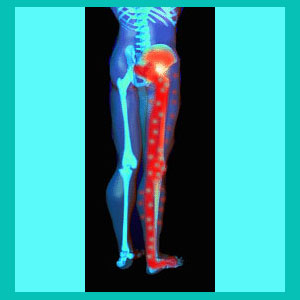
Herniated disc tingling leg is a disturbing symptom typically linked to lumbar and lumbosacral bulging discs. Tingling is one of the most prevalent symptoms of sciatica conditions and is often experienced in conjunction with weakness, numbness and/or pain. Tingling can be caused by foraminal stenosis or spinal stenosis enacted by a herniation, but can also result from other possible structural issues in the spine and a variety of nonstructural processes, such as disease, nerve damage or ischemia. Being that tingling is a neurological symptom, patients are best served by seeing a qualified neurologist for evaluation and possible treatment.
This dialog investigates the occurrence of unilateral and bilateral tingling in the legs.
Herniated Disc Tingling Leg Expressions
Tingling in the leg or legs is certainly a common sciatica symptom. Tingling in itself can be disconcerting, but at least it is not agonizingly painful. Tingling may exist all the time or may come and go with activity, inactivity or particular positions.
In many cases, activity-related tingling is coincidental and not inherently linked to the causative issue. In the majority of cases, psychosomatic conditioning may play a huge role in when the tingling starts and ends. This can be true to some extent regardless of the source of symptoms, but is a major factor when the underlying source of symptoms is a mindbody process.
Tingling which is blamed on a herniated disc should stay in a consistent location. For patients who experience tingling which moves around, especially to areas not served by the affected implicated nerve root, the diagnosis might be wrong, unless severe central spinal stenosis is the conclusion.
Tingling Leg from a Herniated Disc
Diagnosing neurological symptoms can be a real challenge and most are not correctly identified for what they truly are. Chronic tingling is most often associated with pinched nerves, although this is sometimes illogical, since true nerve root compression will produce total objective numbness and weakness, over time, not intermittent tingling and pain. If the nerve is only partially compressed, the possibility for chronic pins and needles exists, but this type of nerve impingement often resolves on its own.
Spinal stenosis can cause variable symptoms, sometimes in relation to movement, position or activity and can generate tingling, weakness, numbness in the legs, even when it exists in the cervical spine. This makes accurate diagnosis rare and successful treatment rarer still.
A tingling leg may not be sourced from any spinal issue. Instead, there may be nerve damage in a peripheral branch of a local nerve or in the sciatic nerve itself. Disease and infectious processes might cause tingling, as seen in the case of diabetic neuropathy.
Herniated Disc Tingling Leg Synopsis
Tingling as an exclusive symptom, or in combination with pain or other neurological effects, may be blamed on a herniated disc when all along another physical and nonstructural issue is the real source.
Psychosomatic oxygen deprivation is one of the most logical causations of tingling and variable pain patterns most often associated with a sciatica diagnosis. Be very careful when pursuing herniated disc treatments for tingling and other nerve effects unless the diagnosis is rock solid.
Instead of rushing into therapy, take time to thoroughly investigate your diagnosis and look for holes in the theory before agreeing to anything drastic or invasive. Your neurologist can help in this endeavor, as long as they are looking out for your best interests and not simply trying to make money from your suffering, as is a truly sad occurrence.
Herniated Disc > Herniated Disc Tingling > Herniated Disc Tingling Leg





